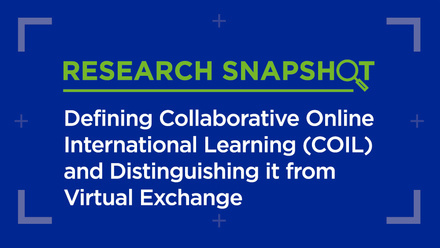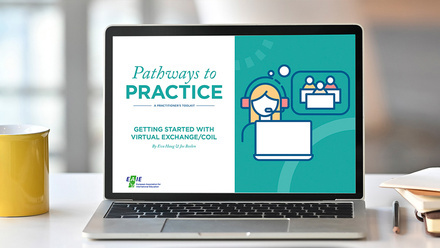Blended Learning: What is a flipped classroom?

In the digital age, technology-based teaching methodologies continue to evolve. While most online learning technologies are aimed at educating students from a distance, this blog post considers a technique − known as the ‘flipped classroom’ − being used in international classrooms and for internationalisation at home practices. This technique falls somewhere between the spectrum of traditional classroom teaching and online learning, as it incorporates both into the learning modality.
A form of blended learning
The flipped classroom is a form of blended learning which incorporates both face-to-face class time and web-based learning. The hallmark of blended learning is that the strengths of these two teaching/learning modalities are intentionally combined, resulting in a customised education experience.
What is a flipped classroom?
In a flipped classroom, the learning process is flipped on its head; the typical lecture takes place online and the homework (application of knowledge) takes place in the classroom. More specifically, flipped learning is defined as a "pedagogical approach in which direct instruction moves from the group learning space to the individual learning space, and the resulting group space is transformed into a dynamic, interactive learning environment where the educator guides students as they apply concepts and engage creatively in the subject matter." (Flipped Learning Network, 2014).
New material – in the form of lectures and videos on specific topic areas – is offered online, which allows the student the flexibility to access the content when it is convenient for them. The knowledge gained outside of the classroom is then applied in the classroom, as students participate in group work, problem-solving exercises, and discussions. A flipped classroom shifts the learning from teacher-driven to more student-centred as the class time is repurposed to include active learning and student engagement.
Internationalisation of higher education and the flipped classroom
There is discussion about the benefits of designing a flipped classroom, especially for international students. In a flipped learning situation, international students – and especially non-native speakers – can access the content as many times as needed to assure knowledge attainment. The findings of a study at the University of Alberta comparing flipped classroom outcomes for international students versus local students suggest that international students fared better on the final assessment than local students.
The reality
Integrating online technology into creative instructional methodologies sounds innovative and the way of the future but the reality of creating this new instructional paradigm comes with possible pitfalls. The most important factor needed to successfully flip a classroom comes down to buy-in from administration and teachers. The time, effort, and financial support needed to design flipped teaching methodology can be seen as an obstacle. Administrators have to be committed to offering a non-traditional educational experience and, in doing so, be willing to support teachers in the numerous hours needed to design such a course. The teacher especially needs to be dedicated to the intentional course design, ensuring that the benefits of online learning and face-to-face learning come together in a way that creates the best learning outcomes. With this, the teacher must possess the technological and pedagogical skills to combine these unique teaching modalities. Financial support may then be needed to access technology and in some cases copyrighted material for online teaching.
If you are interested in learning more about a flipped classroom there are plenty of resources available: visit the Flipped Learning Network website; access a literature review and best practices on flipped classrooms; read about a European Commission funded project on flipped classrooms; read the University of Alberta study on international students in a flipped classroom mentioned in this post; and, finally, see a description by EDUCAUSE of how a flipped classroom works.
Leasa Weimer is Knowledge Development Adviser at the EAIE
Looking to learn more about how blended learning can enhance international education? Join the workshop on ‘How blended and mobile learning can facilitate global learning’ at the 27th Annual EAIE Conference.







